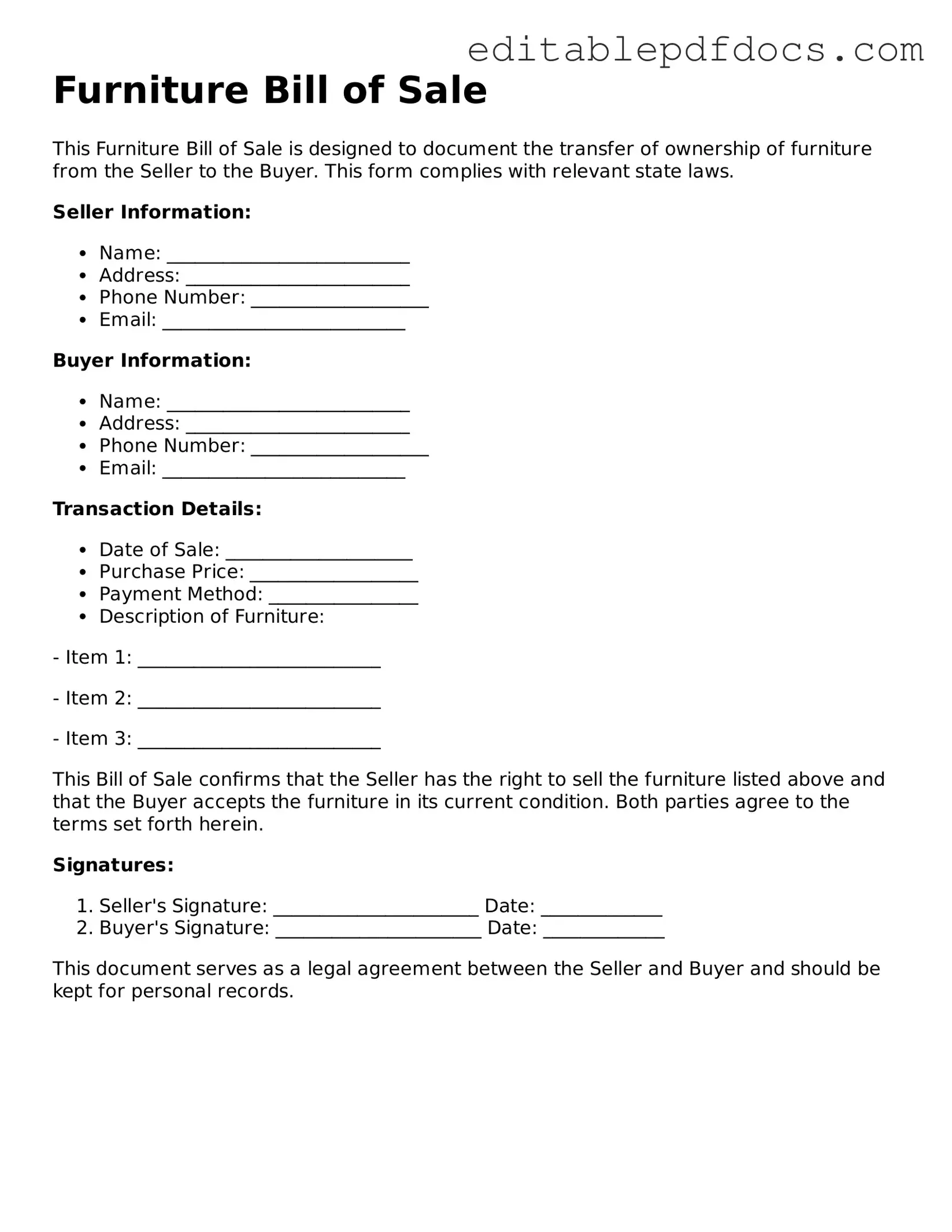When filling out a Furniture Bill of Sale form, individuals often overlook critical details that can lead to complications down the line. One common mistake is failing to include accurate descriptions of the furniture being sold. A vague description may lead to misunderstandings about the item’s condition or specifications. Instead of simply stating “a couch,” it’s beneficial to specify the brand, color, and any distinguishing features. This clarity helps both the buyer and seller understand exactly what is being exchanged.
Another frequent error involves neglecting to include the sale price. While it may seem obvious, omitting this crucial detail can create confusion and disputes later. Buyers and sellers should ensure that the agreed-upon price is clearly stated in the document. Additionally, it’s wise to specify the currency to avoid any ambiguity, especially in transactions involving international buyers.
Many people also forget to date the bill of sale. A date provides a clear timeline for the transaction, which is essential for record-keeping and legal purposes. Without a date, it becomes challenging to establish when the sale took place, which can complicate warranty claims or disputes over payment.
Another mistake is not obtaining signatures from both parties. A bill of sale is not just a document; it serves as a contract. Both the buyer and seller should sign the form to indicate their agreement to the terms outlined. This step is crucial for ensuring that both parties are legally bound to the terms of the sale.
In some cases, individuals fail to provide contact information. Including phone numbers or email addresses allows for easy communication if any issues arise after the sale. This simple addition can save both parties a great deal of trouble should questions or concerns come up later.
People often neglect to keep copies of the bill of sale. After the transaction, both parties should retain a signed copy for their records. This document serves as proof of the sale and can be essential for future reference, especially if disputes occur or if the buyer wishes to resell the item.
Another oversight involves not mentioning any warranties or guarantees associated with the furniture. If the seller offers a warranty or if the item is sold “as is,” this should be clearly stated in the bill of sale. This information protects both parties and clarifies the expectations surrounding the transaction.
Lastly, individuals may overlook the need for witnesses or notarization, especially for high-value items. While not always required, having a witness or notarizing the document can add an extra layer of security. This step can be particularly important if the transaction involves significant sums or unique pieces of furniture.
